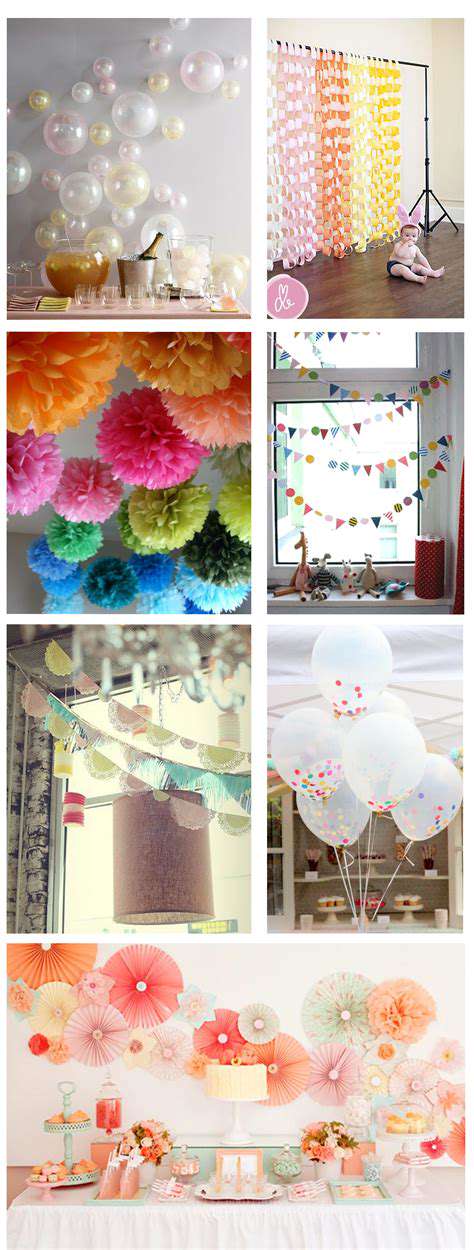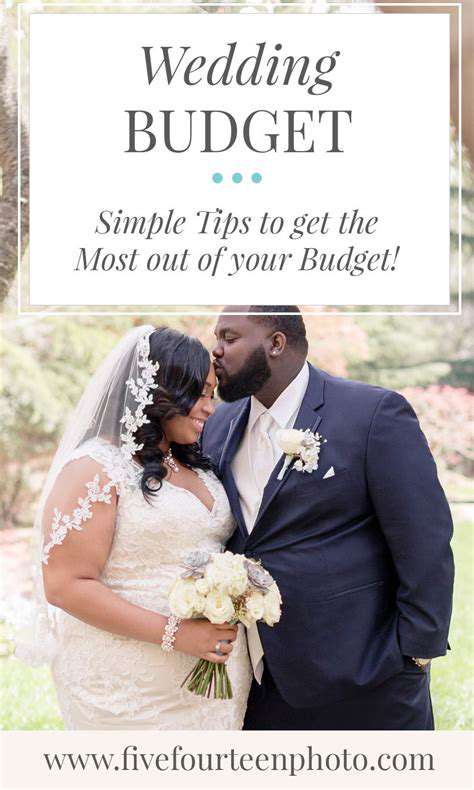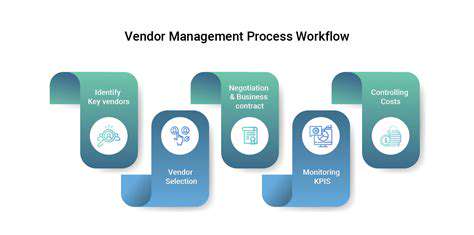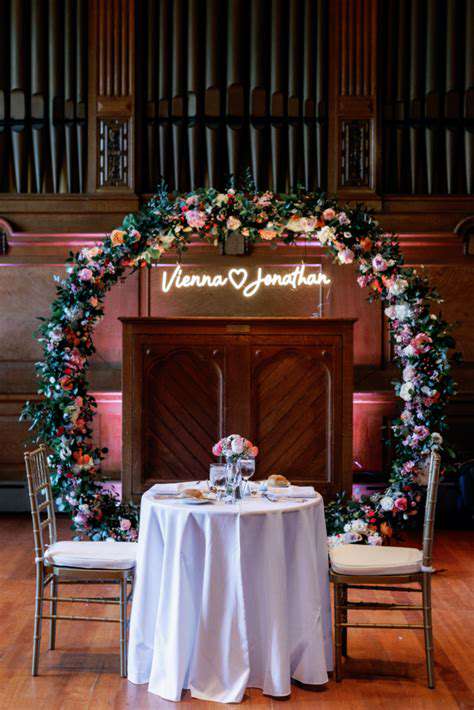How to Plan Your Wedding Budget and Control Costs Effectively
Understanding the Importance of Budgeting
Creating a detailed wedding budget is the foundation for a seamless planning journey. It transforms abstract dreams into actionable steps while preventing financial headaches later. Many couples dive into planning without financial guardrails, only to face tough choices when funds run low. By mapping out costs early, you'll make intentional decisions about where to splurge and where to save. Remember - your budget should reflect your priorities as a couple, not societal expectations.
Venue and Catering: Key Budget Components
These two elements typically consume 40-50% of wedding budgets. When touring venues, ask about hidden fees like cake-cutting charges or overtime penalties. For catering, consider serving stations instead of plated meals - they often cost less while creating interactive dining experiences. Some venues offer all-inclusive packages that bundle rentals, food and beverages at discounted rates. Always taste test menu options before signing contracts.

Invitations and Stationery: Setting the Tone
Paper goods establish your wedding's aesthetic from the first envelope. Digital RSVPs can save hundreds on postage while making guest tracking easier. For physical invites, consider printing on textured paper rather than elaborate letterpress to maintain elegance at lower cost. Many couples now create beautiful digital save-the-dates themselves using design apps, then splurge only on formal invitations.
Guest Accommodations and Transportation: Logistics and Comfort
Out-of-town guests appreciate thoughtful logistics planning. Negotiate room blocks at multiple price points - not everyone can afford luxury hotels. Shuttle services between hotels and venues prevent parking nightmares while keeping guests safe. Pro tip: Provide transportation info early in wedding websites so guests can plan accordingly.
Photography and Videography: Capturing Memories
While tempting to cut corners here, your photos become priceless heirlooms. Consider hiring talented newcomers building their portfolios rather than established pros. Many offer discounted rates for weekday weddings or shorter coverage periods. Create shot lists to maximize your photography time, and discuss must-have moments during consultations.
Contingency Funds: Planning for the Unexpected
Seasoned planners recommend allocating 5-10% of your budget for surprises. From weather-related plan B expenses to last-minute vendor substitutions, this cushion prevents panic. Common overlooked costs include marriage license fees, overtime charges, and gratuities for vendors. Track all spending in a shared spreadsheet to monitor your buffer fund.
Negotiating and Seeking Value for Your Money

Negotiating Effectively
The art of negotiation begins with research. Approach vendors knowing average market rates for their services - this knowledge gives you confidence during discussions. Many vendors have flexibility in their packages, especially during off-peak seasons. Instead of demanding lower prices, ask what value-added services they might include at your target price point.
Identifying Value
True value extends beyond dollar amounts. A slightly more expensive photographer who includes engagement sessions and digital rights might offer better long-term value. When comparing vendors, create scoring systems that weigh both quantitative (price, hours) and qualitative (style, rapport) factors. Sometimes paying more upfront saves money through included amenities or superior service.
Seeking Value Creation
Creative problem-solving unlocks hidden value. Consider bartering services - perhaps your graphic design skills for discounted invitations. Some venues reduce rental fees for weddings willing to occur on Sundays or offseason dates. Building genuine relationships with vendors often leads to unexpected perks and personalized solutions.
Strategies for Maximizing Outcomes
Timing impacts negotiation success. Vendors are most flexible when first booking their calendar or filling last-minute openings. Bundle services with single vendors when possible - a venue that provides catering and rentals often offers package discounts. Always get detailed proposals in writing before making commitments.
The automotive industry's electric revolution mirrors wedding planning in requiring careful energy allocation. Just as EV drivers plan charging stops, couples must strategically allocate their wedding energy (and budget). Range anxiety in EVs parallels wedding budget anxiety - both benefit from thorough planning and contingency buffers.
Creative Cost-Saving Strategies for a Memorable Wedding

Streamlining Operations for Efficiency
Simplify your wedding like a business optimizes operations. Digital tools like shared planning apps reduce administrative time and paper costs. Create standardized processes for tracking RSVPs, payments, and vendor communications. Assign specific family members to manage different aspects (flowers, transportation) to prevent overlap and confusion.
Negotiating Favorable Pricing
Vendors respect informed clients. Presenting competing quotes often motivates vendors to match or beat offers. For floral arrangements, discuss using in-season blooms or greenery-heavy designs. Caterers may reduce per-person costs by offering limited bar options or family-style serving instead of plated meals.
Optimizing Resource Utilization
Maximize every dollar through strategic allocation. Repurpose ceremony flowers for reception centerpieces to double their impact. Schedule hair and makeup trials on engagement photo days to get professional looks for two events. Consider non-traditional venues like parks or art galleries that offer built-in decor.
Leveraging Technology for Automation
Modern tools create wedding efficiencies. Website RSVPs eliminate stamp costs and streamline guest tracking. Digital seating chart apps prevent last-minute scrambling. Cloud-based budgeting spreadsheets allow real-time updates from any device. Even AI tools can help craft personalized vows or design mood boards.
Enhancing Employee Engagement and Productivity
Your wedding team needs clear direction. Provide detailed timelines and contact lists to bridal parties and family helpers. Designate point people for different tasks to prevent duplicated efforts. Consider creating simple instruction sheets for volunteers handling guest books or gift tables.
Monitoring and Adjusting Your Plan Throughout the Process
Defining Your Budget and Realistic Expectations
Budget clarity prevents emotional spending. Track every expense in categorized columns to identify potential overruns early. Build your budget in phases - essential items first, then nice-to-haves if funds allow. Remember that some costs (like alterations) emerge later in planning, so leave breathing room.
Selecting a Venue and Date
Venue choice creates ripple effects. Friday weddings often cost 20-30% less than Saturday events at the same location. Consider nontraditional spaces like museums or libraries that offer built-in character. Always visit potential venues at the same time of day as your event to accurately assess lighting and ambiance.
Guest List Management
The single biggest cost driver. Implement the tiered guest list approach - immediate family and close friends first, then expand if budget allows. Be ruthless about plus-ones - limiting them to serious partners can significantly reduce headcount. Create firm cutoff dates for RSVPs to finalize numbers with vendors.
Vendor Selection and Contracts
Protect yourself with thorough vetting. Require proof of insurance from all vendors entering your venue. Clarify cancellation policies and force majeure clauses after pandemic lessons. Payment schedules should have clear milestones rather than large upfront deposits whenever possible.
Timeline Management and Task Delegation
Create backwards timelines from your wedding date. Color-code tasks by category and responsibility in shared calendars. Schedule buffer weeks before major deadlines to accommodate delays. Designate a non-emotional point person (planner or organized friend) to handle day-of troubleshooting.
Budget Monitoring and Adjustments
Treat your budget as a living document. Monthly budget reviews help catch overages before they snowball. If one area exceeds projections, identify compensating cuts elsewhere. Many couples find they can reduce floral or decor budgets late in planning without sacrificing ambiance.
Read more about How to Plan Your Wedding Budget and Control Costs Effectively
Hot Recommendations
- Step by Step Guide to Creating a Memorable Wedding Experience
- Expert Advice on Planning a Wedding with Family Traditions
- How to Organize a Destination Wedding That Reflects Your Style
- How to Choose the Perfect Wedding Venue for Your Style
- Expert Tips for Choosing Wedding Decor That Elevates Your Event
- How to Plan a Timeless Wedding with Modern Flair
- How to Create a Detailed Wedding Plan That Covers Every Detail
- How to Choose the Right Wedding Music for Every Moment
- Step by Step Guide to Crafting Personalized Wedding Themes
- How to Plan a Sustainable Wedding with Eco Friendly Ideas











